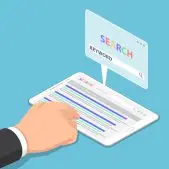Visionary leaders generate ideas they believe will have a material impact on their business. They work hard to build the business case and presentation to land executive support and funding during budget season only to find that their ideas and presentation struggle to fly above the sea of competing ideas and priorities under review.
To get an edge in budget planning, having a compelling vision and plan that is tangible and well articulated can be the difference.
The answer lies in something called an Envisioning Sprint. An Envisioning Sprint is a guided, structured process that enables you to chart a clear path to achieve your business objectives. Here’s what you need to know about Envisioning Sprints — and why they’re so critical when budget season comes around.
Why Invest in an Envisioning Sprint During a Project’s Early Stages?
Senior business leaders often have great ideas. But if they’re not able to articulate their vision clearly and lay out a roadmap for how everything is going to work, they’re not going to get the budget and executive support they need to bring their ideas to life. Believing that your plan will have a net positive material impact on your business isn’t enough. You need to show your executive teams — not just tell.
With an Envisioning Sprint, you’ll be able to:
- Quickly explore possibilities and define your vision for the future.
- Create a concept prototype that provides tangibility for stakeholders.
- Gain alignment for the vision.
- Build a roadmap that features prioritization and timeframes associated with the budget.
When you complete an Envisioning Sprint, you crystalize your plan before seeking budget and alignment. You can experiment with your vision ahead of committing yourself to a project, giving you freedom to innovate and test ideas before investing in their development. Bridges are built with stakeholders throughout the process as your vision gains exposure throughout the organization.
Perhaps most importantly, the roadmaps and output from the Envisioning Sprint enable you to scope and budget projects more clearly and accurately. Once the budget is actually approved, you’ve already laid the track. You can hit the ground running and promptly work your way toward realizing your goals.
What Happens During an Envisioning Sprint?
An Envisioning Sprint begins with defining desired outcomes. At UpTop, we use tools from the design thinking framework to reimagine the future state of your organization’s digital experience. Over the course of the Envisioning Sprint, we’ll work through four stages of development, culminating in the delivery of a North Star vision prototype envisioning a future state.
These stages are:
- Discover. During this intake and research phase, we analyze existing documents and conduct further research to get our team up to speed and accelerate our understanding of the problem.
- Define. During a 2-3 day workshop, we guide your team through a series of structured activities. We’ll review and validate research findings, identify problem areas, discover opportunities, and align on the components of your North Star vision. Finally, we conduct an insights and analysis session, during which we synthesize all the learnings from the workshop and fine-tune the design strategy.
- Design. Next, we design and iterate on mid-to-high-fidelity-concept wireframes that map to your North Star vision.
- Deliver. In the final step, we deliver a clickable prototype to simulate your desired digital experience with basic interactions. The North Star vision is fully conceptualized in a mid-to-high-fidelity prototype, along with a video of the critical path clickthrough.
Envisioning Sprints Work. Here Are Just a Few Success Stories.
We developed our Envisioning Sprint process working with senior leaders at complex, fast-paced, enterprise organizations and we’ve seen this strategy pay off for clients time and time again. For one senior leader in particular, we saw it happen three different times at three different companies — F5, an information technology and services firm, SAP Concur, a SaaS company providing travel and expense management services, and Microsoft, which needs no introduction.
F5
When F5 reached out to us, they were ready to reimagine the future of their website and digital customer experience and wanted help articulating their vision to their executive staff in order to secure funding. We began by reviewing their existing documentation, conducting stakeholder interviews, updating their target personas, and creating a draft of the customer journey map before the collaborative workshop even began.
We went through the different Envisioning Sprint stages detailed above, and our team presented multiple concepts to the stakeholder group to establish a direction. Then, we built out the digital experience’s remaining screens, providing some additional options to choose from. We created a prototype and a narrated video to help tell the story from the user’s point of view, highlighting design features along the way.
The whole process allowed key stakeholders at F5 to feel invested in the design. We arrived at a unified vision which was shared with the F5 executives. In the end, the team secured funding to build out the designs.
SAP Concur
We worked with SAP Concur to architect, analyze, and design a web-based community platform. In this condensed engagement, we completed the envisioning process in just three weeks. We held working sessions with key leaders to explore ideas and functionality that SAP Concur believed would provide value to small and medium sized businesses.
After our first Envisioning Sprint, the work was presented at a company town hall meeting. It generated so much excitement and momentum that a second phase of funding for envisioning more comprehensive prototypes was secured. Executive leadership then signed-off on the product. From there, a Senior Executive provided executive sponsorship for the initiative, and the entire organization offered its support. The team wound up with the budget they needed to build a new community platform.
Microsoft
When Microsoft launched their new sales model and hired over 2,000 inside sales staff in just a year and a half, they needed to seriously overhaul their onboarding process to get the rapidly growing team up to speed. We weren’t looking to reinvent the wheel — but we needed to do something different with the wheel they had. They provided us with their business challenge and their internal ideals, as well as a solid idea of the personas that would be using the new tool.
We worked through their envisioning process in eight weeks, creating a product vision and concept prototype to bring the vision to life. We involved key stakeholders to socialize the concept and gain buy-in across the organization and met with their IT teams to identify the technology and services available for building the platform.
Once we’d created the concept prototype, our executive sponsor presented it to Microsoft’s Senior Leadership Team. The budget was approved for the fiscal year.
Don’t Let Budget Season Sneak By
Depending on when your fiscal year kicks in, you may need to get moving on your budget requests. Don’t just go in hoping for the best. By executing an Envisioning Sprint, you can gain alignment and generate confidence surrounding your project to ensure you get what you need.
While it is possible to move through these steps internally, working with an external partner is beneficial for a few reasons. First, an experienced UX agency can help you move through the envisioning process more smoothly and efficiently, which is important in a time-sensitive sprint. Second, you’ll gain an outside perspective that will help to guide your roadmap and define your goals and vision more objectively. Ready to get started? Let’s talk.


